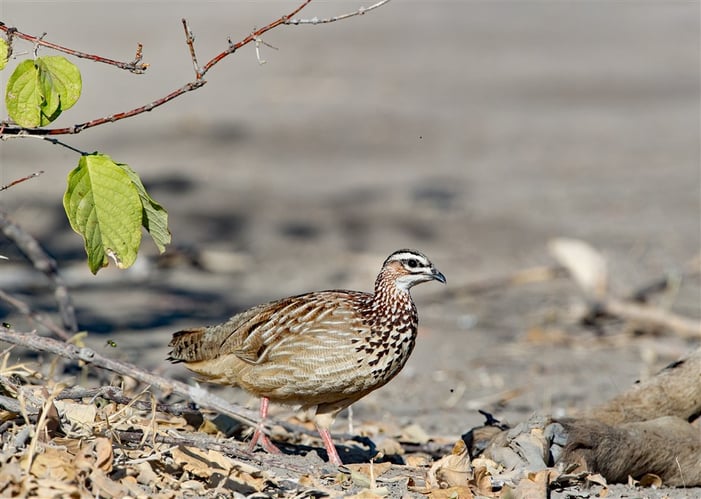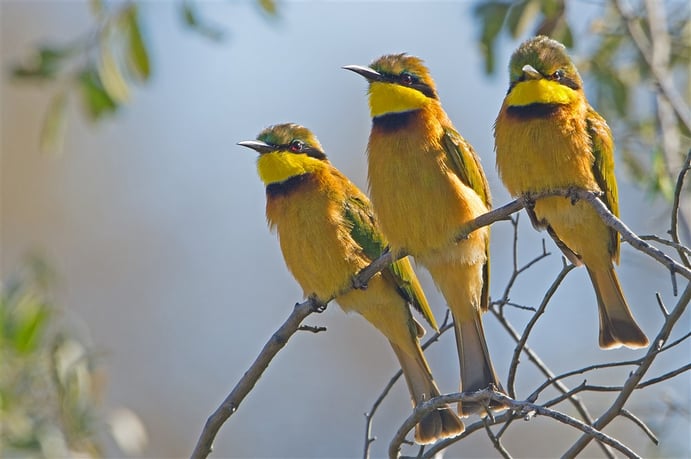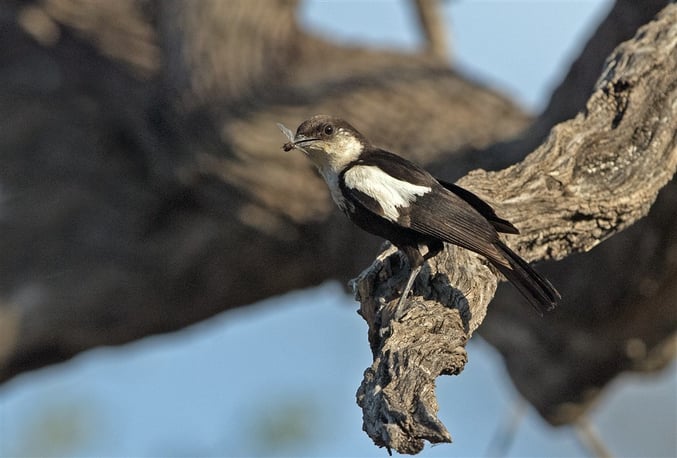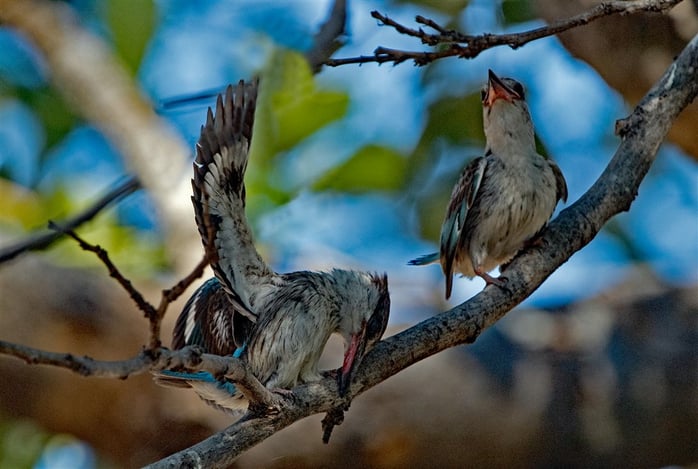Getting up early before sunrise, with your lunch pack prepared for you from the Namushasha River Lodge kitchen, is essential for viewing birds and wildlife. My first impression of the Mudumu Game Park was not that exciting, but in retrospect, I arrived at 12 o’clock, which is not the ideal time for birding and animal watching in the Zambezi region. The Kwando River meanders through the park on its way to Nkasa Rupara, and although not that memorable as far as water birds are concerned, there are more than enough other birds to keep you happy and entertained.

If you are botanically orientated, you can divide the park from east to west in a Silverleaf Woodland zone, Mopane Woodland zone and a Riverine Forest zone to the west. The probably most unique and impressive area is the Mopane woodland, where, compared to the rest of the region and to the rest of Namibia, you get the biggest Mopane trees in this park. The reason for this statement is the poorly drained clay soil which allows for shallow root systems to flourish. These are so important for the existence of these trees, and combined with the good rainfall you have the perfect combination for this phenomenon.

My favourite spot in the park is the Nyoka Pan, especially when it is filled with water after a good rain period. The road to the pan might be a bit challenging, especially during the rainy season. A South African 4x4 driver stopped me on the way and asked me: “Where are we?” I think he asked, because his car was getting very dirty and scratched. There are quite a few reasons why I think this is one of the most beautiful seasonal pans in the Zambezi region. The setting with a Mopane tree forest on the way to and at the pan, a massive Jackalberry tree strangled, but not killed by a Strangler fig, providing enough shade to have a lovely breakfast under it. Driving further along the road you will find the spot where the Arnott’s Chat (Myrmecocichla arnotti) build their nests. This is probably the only place in Namibia where you will find them. If you are not satisfied with the shade at the pan, there is also a shaded forest island that might satisfy some of your other needs, even for a “veldtie”, a private trip behind a bush.

For some unknown reason this park has the most non-fishing kingfishers in the whole Zambezi region. If you do not see Striped (Halcyon chelicuti), Brown-hooded (Halcyon albiventris) and Grey-headed Kingfisher (Halcyon leucocephala) you probably fell asleep over your breakfast pack. As one would expect from any self-respecting Mopane woodland, the chances of seeing White-crested Helmetshrikes (Prionops plumatus) are good. The various trees in the park are quite impressive especially the Bob Marleys (African Mangosteen).

Apart from huge gangs of buffalo, herds of elephants, a cackle of hyenas, and maybe a lion or two, the raptors are for some reason not that common, although there are the odd Dark Chanting Goshawks (Melierax metabates), Martial Eagles (Polemaetus bellicosus), and Bateleur (Terathopius ecaudatus) flying around.

If you have been to the Mudumu Game Park, let us know which animals you have seen on your way.
Author: Pompie Burger


SUBMIT YOUR COMMENT